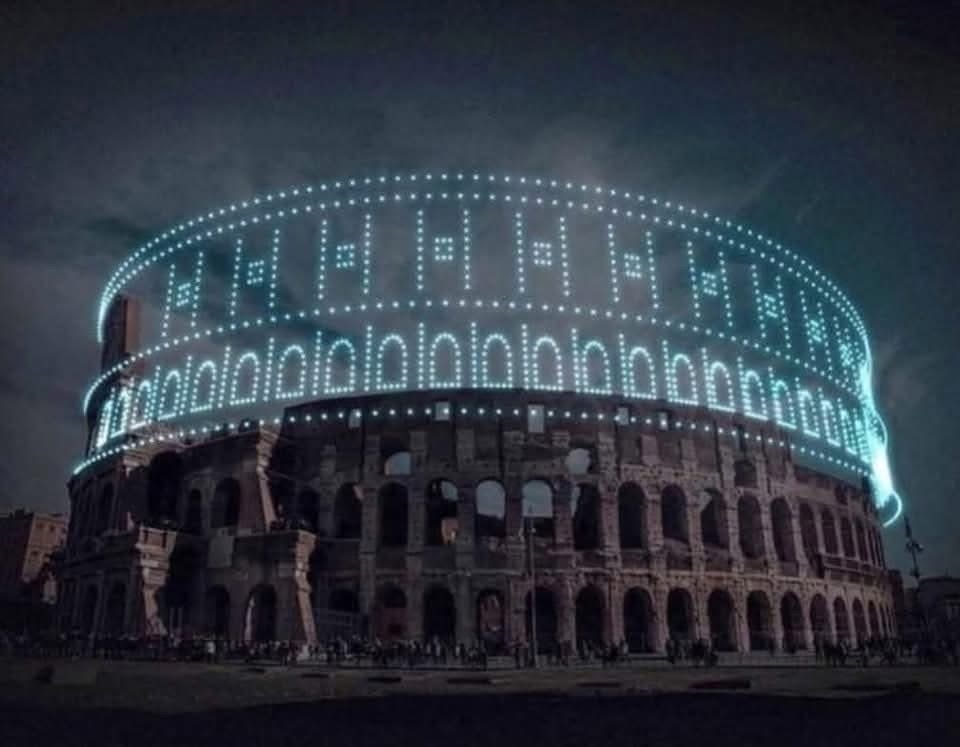1 Catching and relocating snakes.
2 Picking up road side rubbish.
1 Catching and relocating snakes.
2 Picking up road side rubbish.
Tau.Neutrino said:
1 Catching and relocating snakes.2 Picking up road side rubbish.
You’re an ideas man.
Tau.Neutrino said:
1 Catching and relocating snakes.2 Picking up road side rubbish.
3. Making them members of the US Congress and Senate .
Oh, that seems to have already been done.

Divine Angel said:
Tamb said:
Divine Angel said:
Drone Architecture.
breeding with queens
Get the drones to teach uni students how to tell the time. Making large displays in the sky using various formats. If they make a mistake they get zapped by a laser beam from the drones.
Battery life is likely not up to the task.
Body guard drone.
It flies above and behind you
Can warn you of people around you and if attacked it could kamikaze your assailant.
kii said:
Get the drones to teach uni students how to tell the time. Making large displays in the sky using various formats. If they make a mistake they get zapped by a laser beam from the drones.
Everything is better equipped with a laser beam
Tau.Neutrino said:
1 Catching and relocating snakes.2 Picking up road side rubbish.
1) is a stupid idea. The snakes woukld piss of or strike the drone.
2) As long as it leaves the cans and bottles behind for those who want the 10c.
Hunting submarines.
The US Navy had a programme in the 1960s through which a number of small warships, usually destroyers, were equipped with a drone helicopter which typically carried an anti-submarine torpedo, with the aim of destroying hostile submarines.

The drone was “piloted” during takeoff and landing by the ship’s DASH officer who was stationed at a console adjacent to the ship’s flight deck. During the mission the drone was controlled by an officer in the ship’s combat information center, who would fly the drone to the target area using radio control and release the weapon.
The programme was not a great success, and the USN’s operational policies were in large part responsible for the problems. DASH destroyers that deployed with aircraft carriers would not fly their drones during the transit to save them for operational missions. In forward areas, they could not fly their drones while the carriers were operating aircraft because of the fear of electronic interference. Thus, during six-month deployments to forward areas the ships rarely operated the drones.
Further, there was a desire not to risk the drones and to retain them in a high state of readiness for combat. DASH operators acquired little experience; not surprisingly, loss rates were high during operations. Over 400 were lost, which led the Navy to halt DASH program in January 1971.
It seems to have been an idea which was a bit before its time.
Roof cleaning
Roof gutter cleaning.
captain_spalding said:
Hunting submarines.The US Navy had a programme in the 1960s through which a number of small warships, usually destroyers, were equipped with a drone helicopter which typically carried an anti-submarine torpedo, with the aim of destroying hostile submarines.
The drone was “piloted” during takeoff and landing by the ship’s DASH officer who was stationed at a console adjacent to the ship’s flight deck. During the mission the drone was controlled by an officer in the ship’s combat information center, who would fly the drone to the target area using radio control and release the weapon.
The programme was not a great success, and the USN’s operational policies were in large part responsible for the problems. DASH destroyers that deployed with aircraft carriers would not fly their drones during the transit to save them for operational missions. In forward areas, they could not fly their drones while the carriers were operating aircraft because of the fear of electronic interference. Thus, during six-month deployments to forward areas the ships rarely operated the drones.
Further, there was a desire not to risk the drones and to retain them in a high state of readiness for combat. DASH operators acquired little experience; not surprisingly, loss rates were high during operations. Over 400 were lost, which led the Navy to halt DASH program in January 1971.
It seems to have been an idea which was a bit before its time.
Thanks to speed boat drones, Russian Navy much smaller.
Possum relocation.
Tau.Neutrino said:
Possum relocation.
The Dame Edna model
Cymek said:
Tau.Neutrino said:
Possum relocation.The Dame Edna model

Tamb said:
Cymek said:
Tau.Neutrino said:
Possum relocation.The Dame Edna model

LOL
sniffing out truffles deathcaps